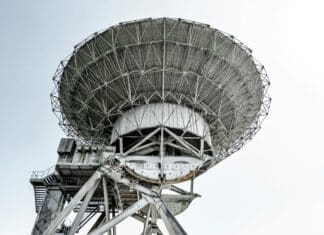This post is also available in:
 עברית (Hebrew)
עברית (Hebrew)
The U.S. Marine Corps is set to bolster its anti-drone capabilities with the deployment of the Leonidas Expeditionary, a cutting-edge high-power microwave (HPM) system designed specifically for counter-unmanned aerial systems (C-UAS) missions. Developed by Epirus in collaboration with the Office of Naval Research (ONR) and the Marine Corps Warfighting Lab, this solid-state, software-defined system aims to support Expeditionary Advanced Base Operations (EABO).
With a budget of $5.5 million, the Leonidas Expeditionary project—also referred to as the Expeditionary Directed Energy Counter-Swarm (ExDECS)—is engineered to intercept multiple drones simultaneously, making it a formidable tool against swarming attacks. According to Interesting Engineering, an Epirus spokesperson said that the system is capable of “defeating any amount of Group 1-2 UAS that enter its field of protection,” allowing it to continuously engage multiple target groups. This capability is crucial in today’s landscape, where drone swarms pose an increasing threat to military operations.
The Leonidas Expeditionary system is particularly notable for its compact design, which allows for easy maneuverability and operational relevance across various expeditionary missions. Expected to be delivered to the Marine Corps Warfighting Lab by the end of 2024, ExDECS will undergo initial integration with the Marine Corps’ Common Aviation Command and Control System (CAC2S) and will be tested in real-world expeditionary scenarios.
One of the key innovations behind the ExDECS system is its modular and scalable architecture, which dramatically reduces the system’s size and weight without sacrificing performance. Built on a solid-state Line Replaceable Amplifier Module (LRAM) architecture, this design mitigates the risk of single points of failure that are common in traditional vacuum-tube-based systems. The LRAM allows for graceful degradation of performance, ensuring operational effectiveness even in adverse conditions.
Epirus emphasizes the scalability of its HPM systems, highlighting that ExDECS is a streamlined version of its larger IFPC-HPM C-UAS systems. “With the scalability of our systems, we are able to develop new form factors that align with customer requirements,” the spokesperson told Interesting Engineering. Whether a customer requires a static setup, a semi-fixed installation, or a fully mobile solution, Epirus is positioned to deliver.
In light of recent conflicts, such as the use of drone swarms in the Russia-Ukraine war, the U.S. Navy is accelerating the integration of HPM C-UAS technology. Epirus recently participated in the Navy’s Advanced Naval Technology Exercise Coastal Trident Program, showcasing its capabilities against emerging threats like kamikaze unmanned surface vessels (USVs).
As the threat landscape evolves, the Leonidas Expeditionary promises to be a game-changer in the Marine Corps’ operational toolkit, enhancing its ability to combat the growing challenge of drone warfare.


























